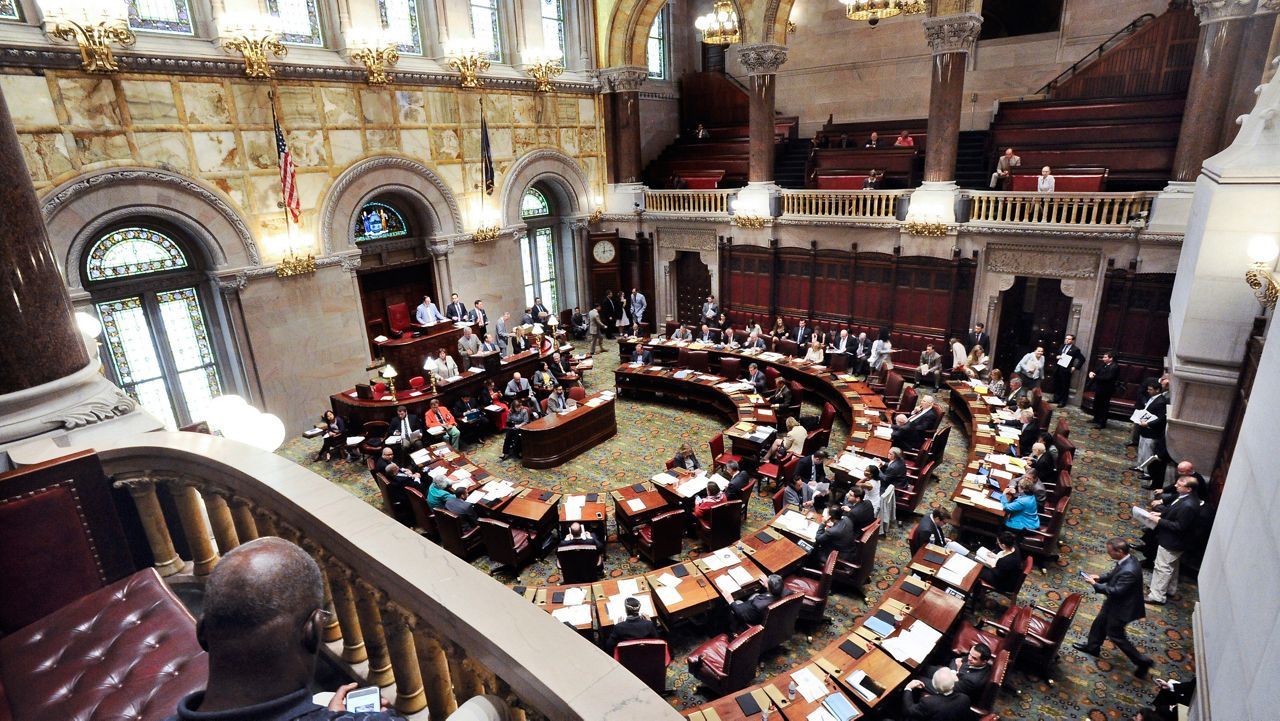Eight years ago, Gov. Andrew Cuomo and the Legislature came to a deal: Lawmakers in the state Senate and Assembly could draw their own district boundaries and, in effect, choose their own voters.
In return, the Legislature needed to pass an amendment to the state constitution overhauling the process after the 2020 census. But now with the next round of redistricting approaching, a very different state Legislature is making alterations to the process again.
And Republicans, now in the minority in both chambers, worry their circumstances of powerlessness could become a permanent one.
Last week on Capital Tonight, we covered the ins and outs of the latest redistricting debate with Blair Horner of the New York Public Interest Research Group.
The change that was given final approval by voters in 2014 for the constitution boils down to giving minority parties some influence in the process of redistricting, something that was virually negligible in the past. And the Legislature, through some remove, was still able to control the process through an appointed commission.
The new amendment given first passage last week will give Republicans -- now out of power in the state Senate as well as the Assembly -- less authority over blocking lines.
“It has become abundantly clear that the will of the people and public interest are far less important to New York Democrats than their own self-preservation," said Assemblyman Will Barclay. "It’s tough to measure the amount of hypocrisy it takes to support a bill today that they argued passionately against just a few years ago."
The issue is even more of an immediate one for Republicans in the state Senate. The GOP conference held majority control until the 2018 elections, when the Democratic blue wave ousted longtime incumbents and gave Democrats a large majority.
Republicans in the state Senate and Democrats in the Assembly had been able to pad their majorities in the past through the redistricting process. Some of the tools used were blunt objects: Republicans in 2014 added a 63rd district in the state Senate in an area with GOP voters (the seat was narrowly won by Democrat Cecilia Tkaczyk, who later lost in a rematch to Republican George Amedore).
The new amendment caps the number of state Senate districts at 63, making it harder to hunt for voters by carving out a new seat.
But Republicans are also concerned with the lowered threshld for approving districting lines.
For instance, current amendment provides for seven yes votes on a redistricting commission. Due to single-party control in both chambers, aproval must come from at least one member appointed by Republican leaders. The amendment to the amendment changes that procedure.
There's a lot at stake for Republicans, who are out of power in Albany. The party has not won an election statewide since 2002. It has not controlled the state Assembly since the end of the Nixon administration. And the party lost its final lever of statewide power in Senate as Democrats eye holding seats on Long Island that had long been considered a Republican stronghold.
The constitution takes time to amend: The change must be again approved next year and then put to voters in a referendum.


